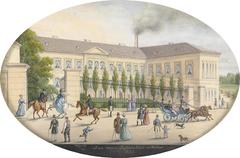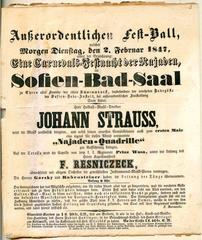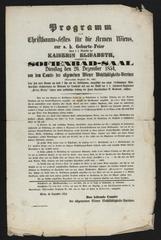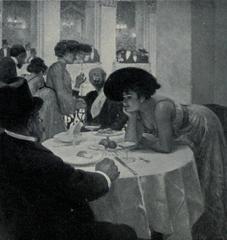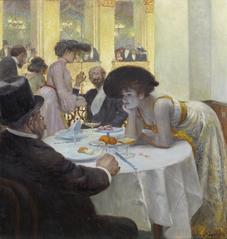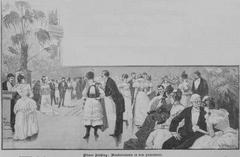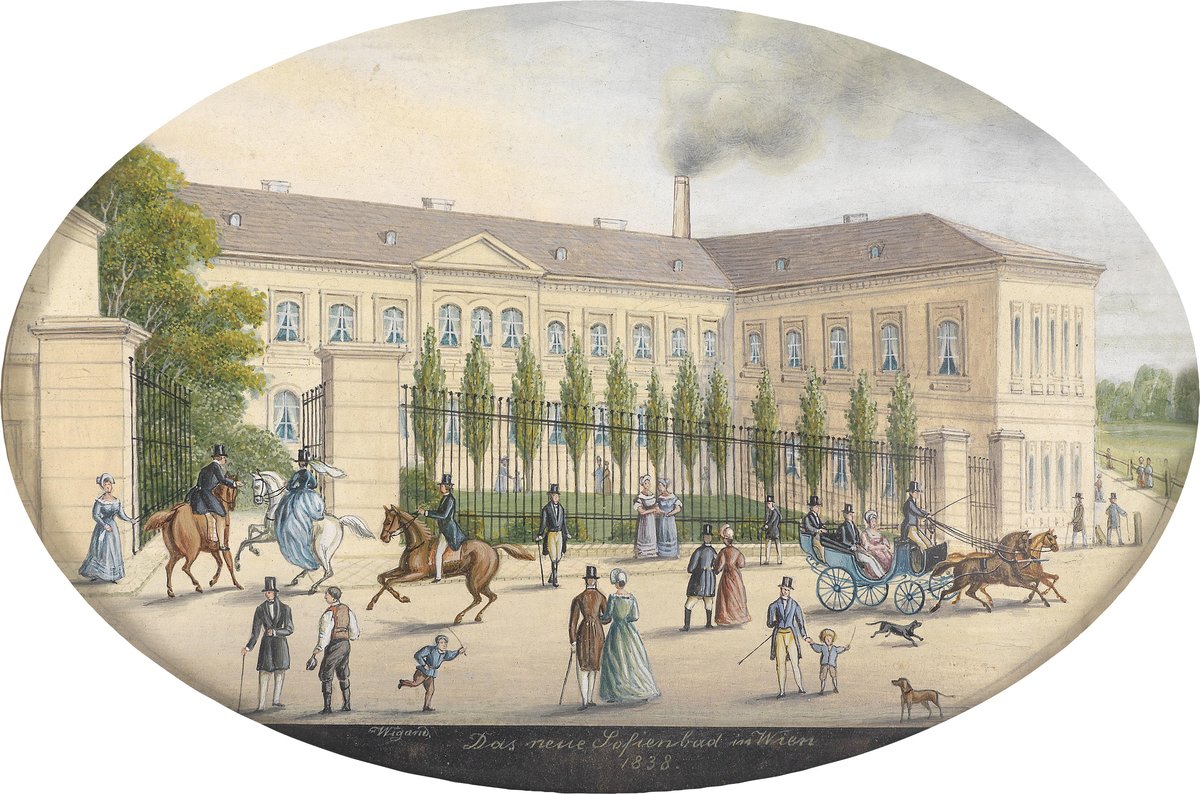
Sofiensaal Vienna: Visiting Hours, Tickets, and Historical Significance
Date: 14/06/2025
Introduction
In Vienna’s vibrant Landstraße district, the Sofiensaal stands as a storied monument to the city’s musical and architectural legacy. From its origins as a royal steam bath to its reimagining as a world-class concert hall and recording venue, the Sofiensaal’s journey reflects Vienna’s evolution as a global capital of culture. Today, the venue seamlessly blends 19th-century grandeur with contemporary amenities, hosting a variety of concerts, balls, and cultural events. This guide provides comprehensive information for visitors—including history, practical details on visiting hours and ticketing, accessibility, and nearby attractions—to ensure a rewarding experience at this iconic Viennese landmark. For the latest updates, consult the official Sofiensaal website and resources such as Sound on Sound and Planet Vienna.
Table of Contents
- History and Cultural Significance
- Visiting Information
- Tips for Visitors
- Nearby Attractions
- FAQ
- Visuals and Media Suggestions
- Conclusion
- Sources and Further Reading
History and Cultural Significance
Origins as Sofienbad (19th Century Vienna)
Sofiensaal’s story began in 1826, constructed as the Sofienbad, a public steam bath named for Princess Sophie of Bavaria. The bath, inspired by Russian models and commissioned by entrepreneur Franz Morawetz, reflected the city’s fascination with spa culture. Despite its innovative design—featuring a large central hall and swimming pool—the steam bath concept never fully resonated with the Viennese, leading to a rethinking of the building’s purpose (Planet Vienna).
Transformation into Concert and Ballroom
By 1849, architects Eduard van der Nüll and August Sicard von Sicardsburg transformed the underutilized bathhouse into the Sofiensaal, a grand concert and dance venue. The ingenious adaptation involved covering the pool with wooden planks, creating a resonant dance floor and establishing the venue as a social hub for Vienna’s blossoming cultural scene. Johann Strauss I himself conducted the opening ball, cementing the Sofiensaal’s reputation as a cradle of Viennese musical tradition (Sound on Sound).
Architectural Features and Acoustics
Retaining its high-vaulted ceilings and the pool cavity beneath the floor, the Sofiensaal’s architecture inadvertently created world-renowned acoustics. The hollow space acted as a resonance chamber, making the hall ideal for both live performances and, later, audio recordings. The building’s late 19th-century expansions included the addition of the “Blaue Salon” and a new façade reflecting the era’s ornate historicist style (Planet Vienna).
The Decca Recording Era
From the 1950s through the 1980s, Sofiensaal became internationally famous as Decca Records’ primary European recording studio. Its unique acoustics attracted legendary producers and conductors—including John Culshaw, Georg Solti, Herbert von Karajan, and Leonard Bernstein. Here, Decca pioneered the “Decca tree” microphone technique and recorded such masterpieces as Wagner’s “Ring Cycle” with the Vienna Philharmonic, setting new standards in classical music recording (Sound on Sound, Discogs).
Restoration after the 2001 Fire
A devastating fire in August 2001 destroyed much of the main ballroom and interior. Thanks to its protected monument status, the Sofiensaal was painstakingly restored between 2011 and 2013, preserving the original façade, spatial proportions, and surviving stucco. The restoration integrated modern features—air conditioning, advanced lighting, and sound systems—while maintaining the hall’s historic ambience (Johann Strauss Konzerte, Planet Vienna).
The Sofiensaal Today
The reopened Sofiensaal is a living monument, hosting classical concerts, balls, banquets, and private events. It is part of a larger complex that includes the Ruby Sofie Hotel, luxury apartments, and the contemporary restaurant “The Room.” The venue is fully accessible, equipped with modern amenities, and remains cherished for its unmatched acoustics and architectural beauty (wikipedia.org, Meeting Vienna).
Visiting Information
Location and Accessibility
- Address: Marxergasse 17, 1030 Vienna, Austria (Discogs)
- Public Transport:
- U-Bahn: Wien Mitte (U3, U4) is a short walk away
- Tram: Line 1 stops at Hetzgasse
- Bus: Lines 4A and 74A serve the area
- Parking: Limited; public transport is recommended
- Accessibility: Fully accessible with elevators and adapted restrooms
Visiting Hours
Sofiensaal does not offer fixed daily visiting hours. Access is available to ticket holders and invited guests during scheduled events such as concerts, balls, and gala dinners. For up-to-date event times and ticket information, check the Meeting Vienna Venue Finder or contact the venue directly.
Tickets and Guided Tours
- Tickets: Prices and availability vary by event; advance booking is recommended, especially for popular concerts and balls. Tickets can be purchased via the official Sofiensaal website or authorized ticket outlets.
- Guided Tours: Occasionally available, offering insights into the venue’s history and architecture. Advance booking is advised.
Event Experience and Amenities
- Main Ballroom: 700 m², capacity up to 550 seated guests
- Additional Spaces: 130 m² foyer, 140 m² Blaue Salon, modern function rooms
- Facilities: Modern restrooms, cloakrooms, in-house bar, and full air conditioning
- Dining: The on-site restaurant “The Room” offers contemporary cuisine
- Accommodation: Ruby Sofie Hotel within the complex
Tips for Visitors
- Plan Ahead: Review event calendars and ticket availability before visiting.
- Dress Code: Smart attire for formal events; business casual for less formal gatherings.
- Photography: Always check with event staff regarding photography policies.
- Arrive Early: Arriving before your event allows time to appreciate the architecture and avoid queues.
- Combine Visits: Explore nearby attractions such as Hundertwasserhaus or Stadtpark to enrich your experience.
Nearby Attractions
- Belvedere Palace: Baroque masterpiece and art museum, 10-minute walk
- Stadtpark: Famous for the golden Johann Strauss monument
- Hundertwasserhaus: Iconic, colorful apartment complex nearby
- Local Cafés: Experience Vienna’s coffeehouse culture in the Landstraße district
FAQ
Q: What are the Sofiensaal visiting hours?
A: There are no fixed hours; the venue is open during scheduled events. Check the official site for event times.
Q: How do I purchase tickets?
A: Online via the official venue website or at the box office, depending on the event.
Q: Is the Sofiensaal wheelchair accessible?
A: Yes, including elevators and accessible restrooms.
Q: Are there guided tours?
A: Occasionally, by prior arrangement.
Q: Can I take photographs inside?
A: Policies vary by event; always ask staff.
Q: Is there parking?
A: Limited; public transport is highly recommended.
Visuals and Media Suggestions
- Photos:
- “Sofiensaal Vienna façade showcasing historic architecture”
- “Interior view of Sofiensaal main ballroom with vaulted ceiling”
- “The Blaue Salon at Sofiensaal Vienna, intimate event space”
- Virtual Tours/Maps: Available via the official website for enhanced planning.
Conclusion
The Sofiensaal embodies Vienna’s enduring dedication to cultural and musical excellence. From its origins as a royal bathhouse through its pivotal role in music history, the venue’s resilience and ongoing relevance are testaments to careful preservation and adaptive modernization. Whether attending a concert, gala, or guided tour, a visit to Sofiensaal is a journey through Vienna’s vibrant past and dynamic present. For the latest event schedules, ticketing, and visitor information, consult the official Sofiensaal resources and consider using the Audiala app for curated cultural guidance.
Sources and Further Reading
- Sound on Sound: Decca Ring Cycle, Then & Now
- Planet Vienna: Sofiensaal
- Discogs: Sofiensaal Recordings
- Johann Strauss Konzerte: Venue & History
- Meeting Vienna: Sofiensaal Venue Finder
- Wikipedia: Sofiensaal
- Viennese Waltz Blog – Sofiensaal Review
- Audiala Cultural App
- Hunting Bond: Sofiensaal and James Bond
